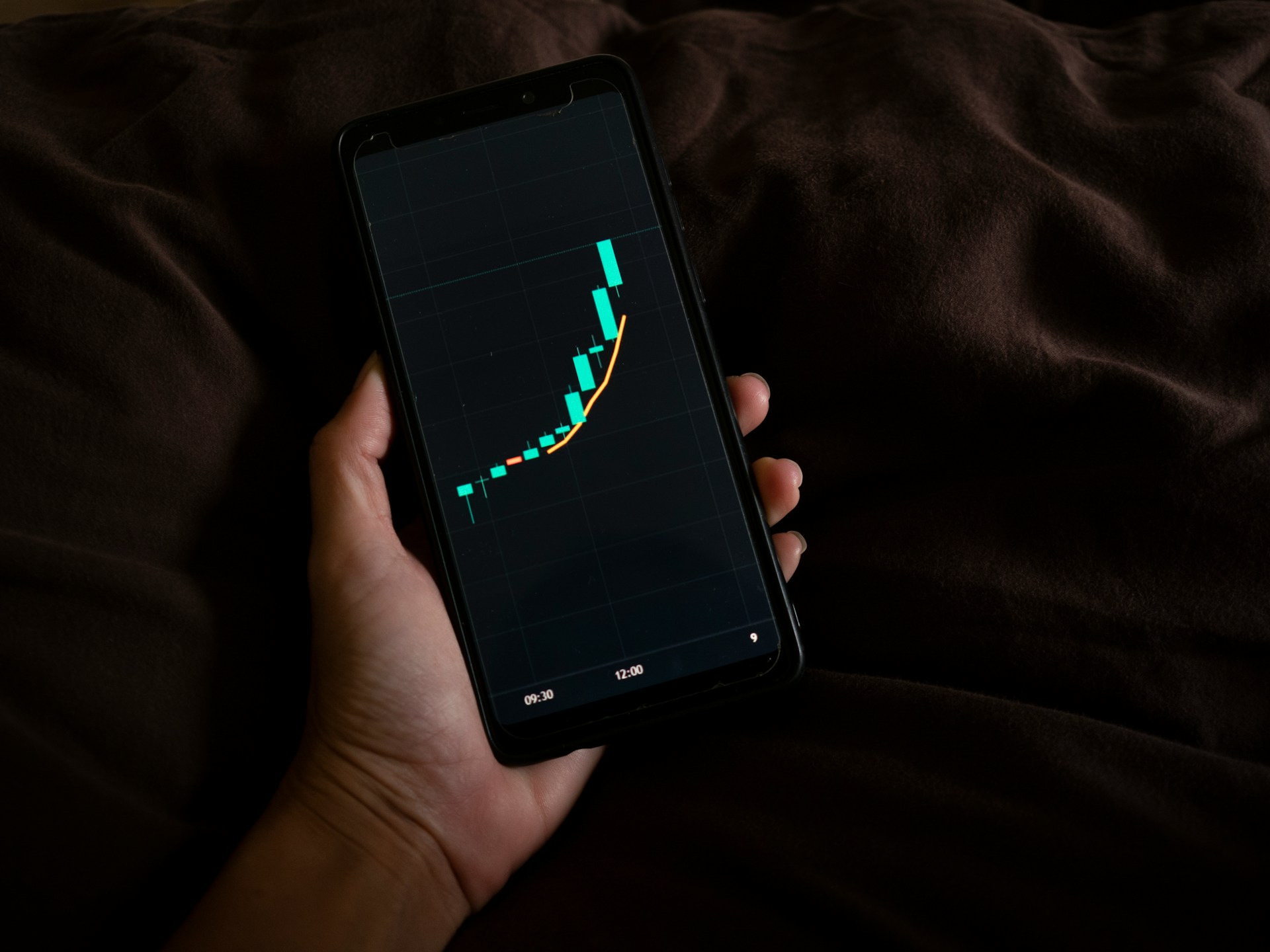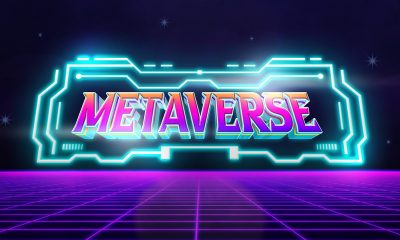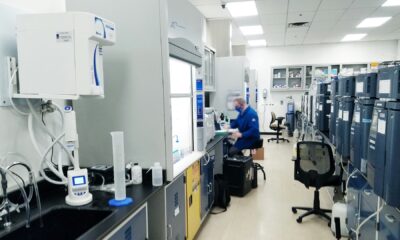Business
Digital Twins Are Big in Industry, but What About the Metaverse?
While digital twins are a concept that is already well known and understood in industrial applications, familiarity with digital twins is virtually non-existent outside of this field. However, that’s all set to change soon as the metaverse gains traction and new technologies like AR, AI, and 5G gain mass-market adoption. Here we take a look at how all of this is coming together in the metaverse.

Outside of the world of industrial equipment maintenance and other related fields, digital twins are yet to receive a whole lot of attention. However, that’s all set to change as the metaverse begins to make itself felt in our day-to-day lives.
Exactly how much digital twins will become a part of our lives is, of course, still up for speculation. It’s a field where we haven’t even begun exploring all the possibilities, so there are surely dozens of use cases we’re not even aware of.
However, if we just take a surface-level look at how digital twins can put a metaverse spin on things we already have and do, the possibilities begin to look endless. So here we’re going to provide a brief overview of what digital twins are and how they might come to impact our lives.
What Is a Digital Twin?
Given that they’ve largely remained out of the broader public’s imagination up until now, awareness about what digital twins are is understandably low. Therefore, before exploring what we may use digital twins for in the metaverse, we first need to establish what a digital twin is.
Starting with what is evident, digital twins are naturally digital replicas of something in the real world. In their most widespread use case, digital twins are often digital replicas of a piece of machinery.
How Are Digital Twins Useful?
To use the machinery example as a starting point, here we create the digital twin by combining multiple data points. This data could include the CAD drawings for the machine, its maintenance schedule and record, details about the parts, and real-world sensor data.
Interesting things start to happen when we combine all of this in a digital model. For example, the digital model can simulate the wear and tear on affected components by using vibration data from a sensor. Like this, maintenance workers can get timely alerts about when they need to replace various parts.
What makes digital twins especially powerful here is that we can then link up the same digital twin to a set of Augmented Reality (AR) smart glasses. This connectedness would then allow the worker to go in and work on the equipment with real-time data and instructions overlaid on what they’re seeing. This then frees up their hands as they no longer need to use service manuals in the field.
Additionally, by using sensors and cameras in the worker’s glasses, we could then capture additional data during maintenance that we can then add back into our digital twin. GE’s jet engine assembly line has already implemented this capturing of data in certain parts of their workflows.
From Limited Beginnings, Digital Twins Are About to Explode
While digital twins in the industrial world are already seeing some fascinating examples come to life, it’s only just the beginning. Digital twin use cases begin to explode over the coming few years.
The rapid acceleration of new technologies like Artificial Intelligence (AI), AR, 5G, and cloud computing is just part of what will drive digital twin adoption. However, while these technologies help, the most significant driver will be the metaverse.
This isn’t too hard to fathom, either, especially when we consider that digital twins are the embodiment of what the metaverse is: the crossover of virtual and real worlds. Further, when we consider that the seeds of digital twins already exist on the internet today, their natural evolution in the metaverse will inevitably lead to full-blown digital twinning.
Avatars Are the Perfect Example of a Digital Twin Use Case
One of the perfect pre-seeded digital twin use cases in the metaverse is the humble avatar. In fact, avatars are already doing this in some ways. It’s just that the versions we have now are very primitive when compared with what’s coming.
To give some idea of how well-established the idea of digital twin avatars already is, you need only look at how kids are living through their online identities now. Take Roblox, for example, where kids deck themselves out in digital swag and socialize in the game. Sure, it’s hardly what we would call a twin from a technological point of view. But if you look at the emotional bond that players have to their avatar and its life, it’s hard to deny that it’s not at least a little bit real.
However, as we’ve said, this early version of digital twins is just the beginning. Once we start integrating technologies like AI, AR, VR, edge computing, and 5G into the digital twin equation, things start getting a whole lot more interesting.
How Businesses Can Use a Digital Twin Avatar
Let’s just picture an example of how a digital twin avatar could find its way into an everyday business. In this example, we will illustrate how the digital twin could create a greatly enhanced chatbot.
To do this, the first step would be to create a ‘hologram’ of a customer service representative. Customers will then see and interact with any time they contact customer service—much better than a text chat interface, wouldn’t you say?
Following this, powerful AI technology could power the avatar’s speech and actions, bringing it to life as though it were the real person. Things would then really come to life when all of this is combined in an Augmented Reality or Virtual Reality environment. Especially if it’s run on edge cloud computers over 5G networks, leading to zero-latency interactions that are indistinguishable from real life.
Sounds Fantastical, but Is Any of This Plausible Today?
As futuristic as all of this sounds, most of this is already possible today. There are really only two things holding it back: the cost of computing resources, and the difficulty of integrating the technology components we need.
As to the cost of computing problem, that’s a problem which Moore’s law will naturally take care of. The fact that we will also offload a lot of it onto edge computers in the cloud also makes it far more reasonable than expecting that end-users will have ultra-powerful devices to run it all.
The integration problem is also fast on its way to becoming a non-issue. Particularly due to the work of XRApplied (CSE: XRA).
How XRApplied Is Making Digital Twinning Possible
XRApplied saw that integrating disparate technologies was going to become a critical problem as the metaverse evolves. That’s why it has set out to become the infrastructure company for the metaverse.
This implies that the company has built up a range of tools and processes that make integrating different technologies a snap. For example, the company already has the tools to bring together WebAR with geolocation and AI integrations. And it can combine them all via proprietary SDKs and APIs that it has engineered for the metaverse.
And while it’s still early days now, don’t expect to wait long to start seeing all of this come together in digital twins soon. The pace of innovation in technology is truly breathtaking, meaning that it’s only a matter of a few short years before digital twins become a part of your life, too.
__
(Featured image by Geralt via Pixabay)
DISCLAIMER: This article was written by a third-party contributor and does not reflect the opinion of Born2Invest, its management, staff, or its associates. Please review our disclaimer for more information.
This article may include forward-looking statements. These forward-looking statements generally are identified by the words “believe,” “project,” “estimate,” “become,” “plan,” “will,” and similar expressions. These forward-looking statements involve known and unknown risks as well as uncertainties, including those discussed in the following cautionary statements and elsewhere in this article and on this site. Although the Company may believe that its expectations are based on reasonable assumptions, the actual results that the Company may achieve may differ materially from any forward-looking statements, which reflect the opinions of the management of the Company only as of the date hereof. Additionally, please make sure to read these important disclosures.

-

 Business1 week ago
Business1 week agoWhat You Can Do to Create an Online Store People Trust
-

 Business2 weeks ago
Business2 weeks agoCardCash.com Pulls off Massive Turnaround in Ramp Up to RSTN Nasdaq Uplisting
-

 Markets5 days ago
Markets5 days agoSoybeans and the Products Closed Lower Last Week
-

 Cannabis2 weeks ago
Cannabis2 weeks agoOktoberfest Without Cannabis: German Authorities Are Considering Introducing a Ban





















